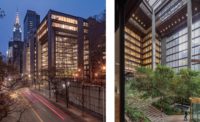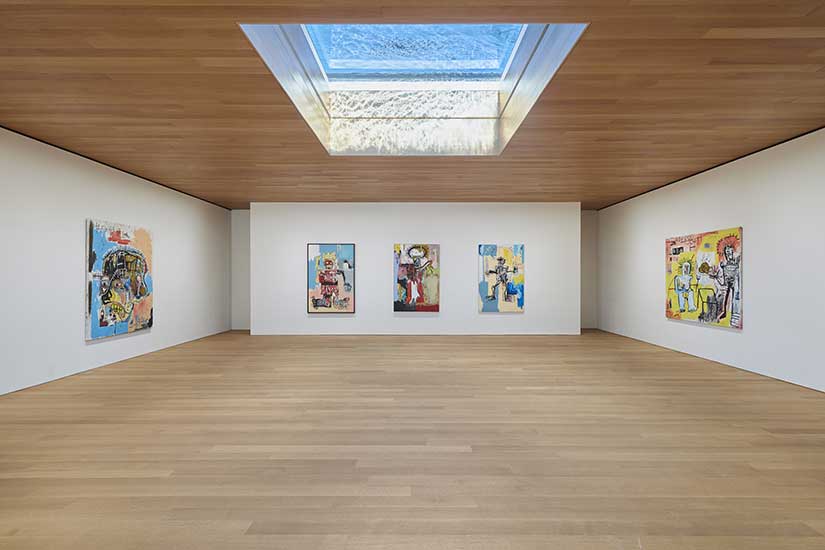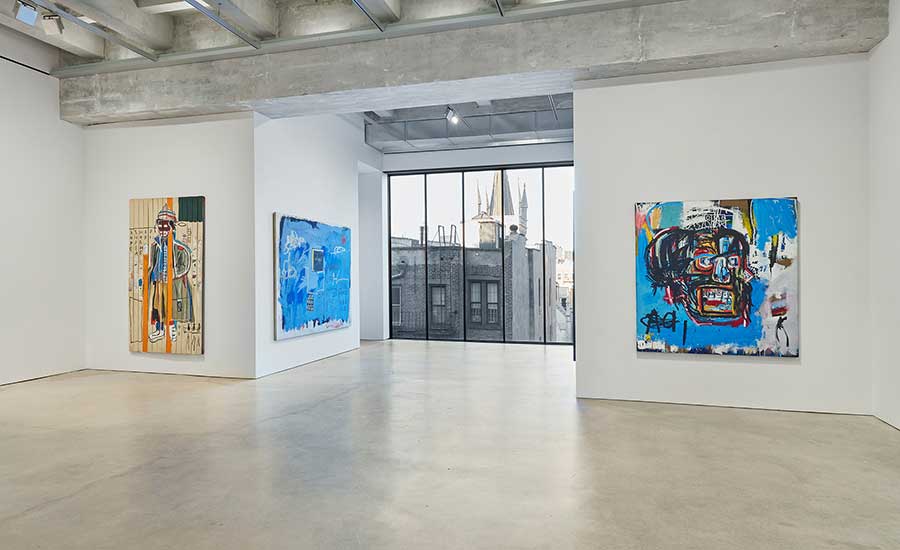Renovated Industrial Building Gets New Life as Brant Foundation Art Study Center

The fourth-floor gallery, here installed with works by Jean-Michel Basquiat, features a water-covered skylight.
Photo by Tom Powel Imaging, Copyright Estate of Jean-Michel Basquiat. Licensed by Artestar, New York. Courtesy The Brant Foundation

Rooftop terrace showing the top of the fourth-floor skylight
Photo by Sean Keenan, Courtesy The Brant Foundation

Installation of Jean-Michel Basquiat exhibition
Photo by Tom Powel Imaging, Copyright Estate of Jean-Michel Basquiat. Licensed by Artestar, New York. Courtesy The Brant Foundation

Installation of Jean-Michel Basquiat exhibition
Photo by Tom Powel Imaging, Copyright Estate of Jean-Michel Basquiat. Licensed by Artestar, New York. Courtesy The Brant Foundation




Architects & Firms
It’s good that Peter M. Brant, who knows how to buy art, found Richard Gluckman, who knows how to display it. In 2009, Gluckman renovated an elaborate stone barn in Greenwich, Connecticut, adjacent to a polo field on Brant’s estate (which also includes a Jeff Koons “Puppy” and a house by Venturi and Rauch). The barn became a spectacular exhibition space for the newsprint and publishing mogul’s Brant Foundation. Then, three years ago, Brant hired Gluckman (who is partners with Dana Tang in Gluckman Tang Architects) to create a new outpost of the Foundation on the Lower East Side of Manhattan. Brant had bought a former Con Edison substation that was the home and studio of the artist Walter De Maria until his death in 2013. Gluckman, part of the New York art world since 1977, knew De Maria, and the building, well. “Walter would call me if a pipe broke,” he remembers.
The substation was designed 100 years ago by William W. Whitehill, a neoclassicist who knew what he was doing. The midblock building dwarfs the tenements that flank it, and yet it doesn’t seem especially imposing from the street. Thanks to Whitehill’s trompe-l’oeil proportioning of its oversized windows and limestone trim against a ruddy brick facade, it looks almost like another residential building.

That’s why the interiors of what is now officially the Brant Foundation Art Study Center come as such a shock. Gluckman left the spaces largely unencumbered, giving their dramatic proportions full expression.
The second floor, which used to house massive transformers beneath its 32-foot ceilings, is now one of the most compelling gallery spaces in New York. Its beige brick walls and the cleaned-up steampunk gantries that slide across the room on tracks add the kind of industrial frisson of such museums as Dia:Beacon, the Prada Foundation in Milan and the Tate Modern in London. Gluckman added a gantry-like mechanism of his own; mounted on the fourth-floor ceiling, it can move art up and down through 8-foot-by-10 foot openings cut into the building’s floor plates. The hatches that cover those openings are unobtrusive and strong enough to support crowds.
The third floor, with mere 18-foot ceilings, is relatively ordinary (though huge glass windows in the back wall offer Thomas Struth–like views of the surrounding neighborhood). But that just sets the stage for the remarkable fourth floor, where Gluckman’s interventions are most elaborate. First, the architect covered both floor and ceiling in boards of rift-cut, old-growth clear white oak, giving the large room the coziness of a Finnish sauna. (Elsewhere in the building, floors and ceilings are the original raw concrete.) In the center of the ceiling he and project architects Robert White and Edowa Shimizu installed a 10-foot-by-12-foot skylight, made of about four inches of clear acrylic covered with another four inches of water. Sun shining through the water creates dazzling (and dynamic) light-spatters throughout the room. It’s like a James Turrell Skyspace crossed with a David Hockney pool painting; the effect is so diverting that the fourth floor would be a worthwhile destination even without art on the walls. (That said, the 70 Jean-Michel Basquiat paintings in the Brant’s debut exhibition provide a wonderfully frenetic counterpoint to the calmly self-assured interiors.)
The 16,000-square-foot building required multiple infrastructural upgrades. Gluckman installed an elevator (with a slit window) in the southeast corner of the building, and restored and extended a glassed-in industrial stairway in the southwest corner. Both lead to the roof, where the landscape architect Madison Cox arranged paving and shrubs around the skylight-cum-reflecting pool. From bottom to top, the building is one that gives Gluckman, among the top ranks of museum and gallery designers for 40 years, a welcome chance to show just how accomplished he is.
In-body photograph of the Jean-Michel Basquiat exhibition by Tom Powel Imaging, copyright Estate of Jean-Michel Basquiat. Licensed by Artestar, New York. Courtesy The Brant Foundation.






